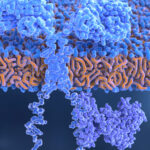Litifilimab shows promise for SLE patients with active arthritis and skin disease in phase 2 trial.
Encouraging findings from a phase 2 study point to a potential role for the anti-BDCA2 antibody litifilimab in relieving common symptoms of lupus.
The two-part, multicentre, randomised, double-blind phase 2 trial was conducted to investigate the safety and efficacy of the drug in systemic lupus erythematosus (SLE) and cutaneous lupus erythematosus.
The trial enrolled patients between the ages of 18 and 75 with an SLE diagnosis at least 24 weeks prior to enrolling.
The SLE protocol, part A, enrolled patients with one or more active skin lesions and active arthritis. It included 110 participants who were randomised 1:1 to receive litifilimab 450mg or placebo at weeks 0, 2, 4, 8, 12, 16 and 20.
The primary endpoint was change from baseline in the total number of active joints (tender joints and swollen joints) at week 24, and patients were observed for an additional 12 weeks.
The study findings, published in NEJM, revealed that a 450mg dose of litifilimab was superior to placebo in terms of achieving the primary endpoint. The least-squares mean change from baseline to week 24 was −15.0 1.2 with litifilimab, compared to −11.6
1.3 in the placebo group, based on the total number of active joints (least squares mean difference −3.4 joints [95% CI –6.7 to –0.2; P=0.04]).
Secondary endpoints evaluating skin-related disease activity mostly found no significant differences, although the authors noted that the study wasn’t powered to do so.
There were no serious safety signals, with a similar percentage of mild to moderate adverse events reported in the treatment and placebo groups.
Larger and longer trials are required to confirm the effect and safety of the drug in patients with SLE, wrote the authors, with phase 3 trials currently in the works.





